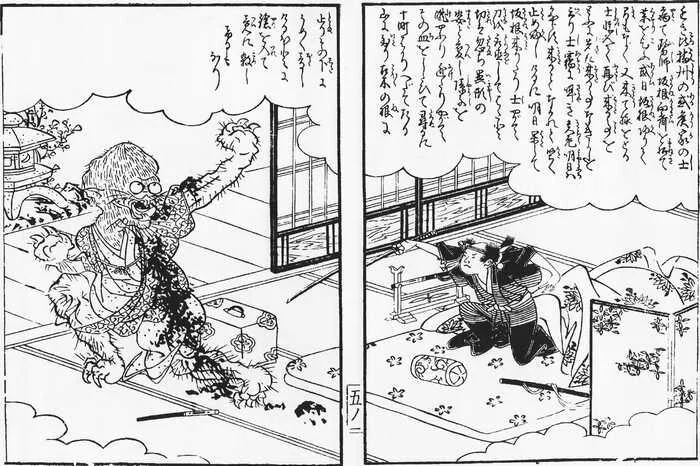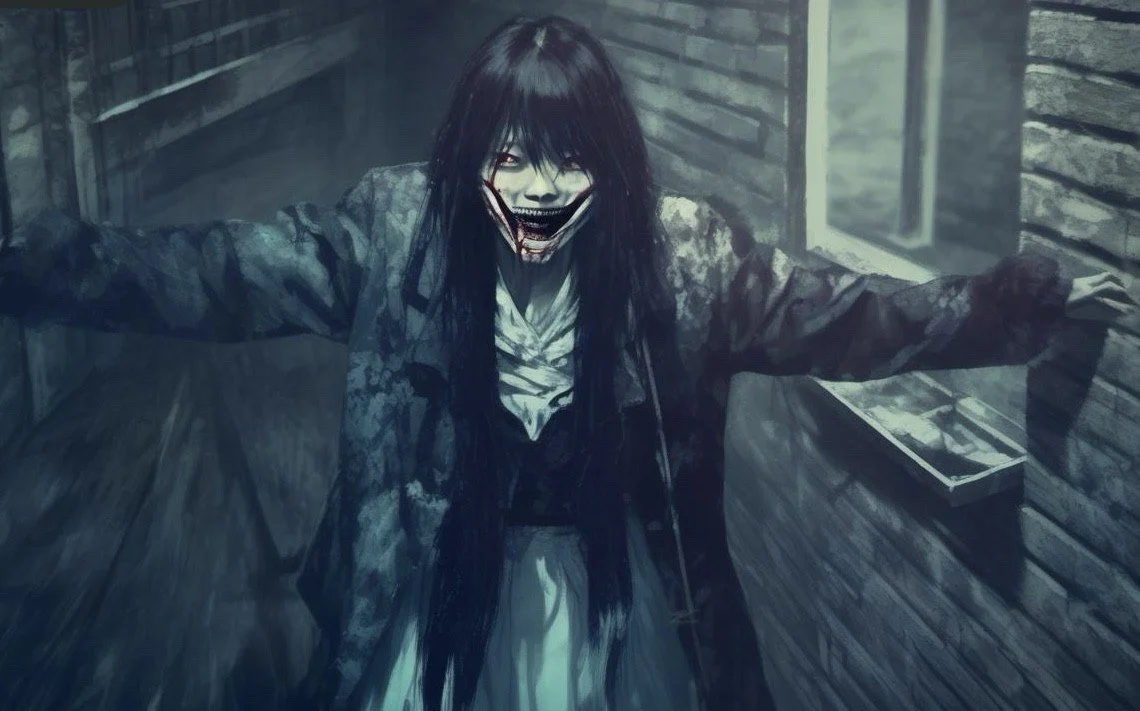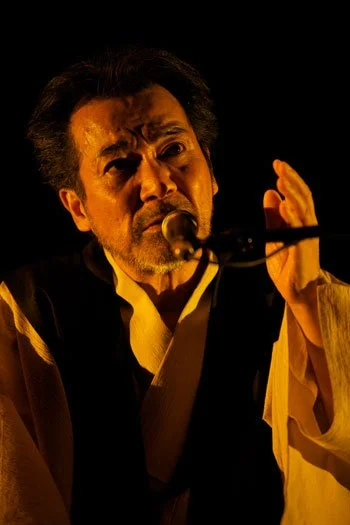EPISODE GUIDE
SEASON five:
legends and monsters
Follow and subscribe for free: Spotify * iHeartRadio * RSS Feed * Apple Podcasts
Episode 26: Hibagon Part One
For hundreds of years, a hairy ape-like hominid has been reported in the forested mountains of Japan. It has become known as the “Hibagon.” Hear the ancient tales of this creature and its strange derivations. Many of these frightening tales have never been told in English before.
We look first at the tale of the Kurote Kiri (“The Severed Black Hand”), a tale of a hairy creature like the Sasquatch whose hand was cut off by a samurai. Where that hand was cut off is unbelievable, and if it were not so frightening, might actually be funny.
The Monster of Mount Bandai tells the story of a hairy primate that terrorized a community in the 18th Century. A master samurai finally had to be sent out to hunt the creature down before it could steal away more villagers. The corpse of a creature he brings back is unbelievable in appearance.
Stories of the Kurombo and Satoru take us into more legendary territory with hairy giant bipeds that can read minds and attack and eat people. Hear the tale of how the barrel-maker outwitted one of these demon creatures and how a woodcutter frightened one away. And then there is the hairy wildman known as the Kakuen that captures human women to propogate its race.
The Bandai Monster
The ancient hibagon picture scroll
Kurote
In the 1970s, a rash of sightings of the Hibagon occurred. Hear the stories of the witnesses, the fear that washed over a community, and the national attention brought to this hairy hominid. A special department had to be created within the local government to deal with the many sightings. Is this Japan’s Bigfoot? Well, unlike Bigfoot, a body of this creature has been found and photographed, and proven to be an unknown species of ape walking on two feet, and taller than a man.
A picture scroll centuries’ old was recently discovered at the base of Mount Hiba describing this hairy hominid. It has terrorized the populace for hundreds of years. The ancient peoples believed it to be the incarnation of a local deity called the Kunitokotachi no Mikoto.
This episode also explores accounts of encounters with other giant hairy creatures seen in the mountains of Japan. They perhaps are all the same species called by different names because of the separation of clans in Japan’s past.
episode 27: Hibagon Part Two
This episode explores three terrifying urban legends revolving around the Kashima-san trope. Hear the tale of the teke-teke as it clickety clacks its way to chase you down with only its upper torso.
Try not to be frightened by the tale of the kuchisake-onna, the slit-faced woman, as she asks if she is pretty before killing.
And Kashima-san herself, searching forever for her missing leg. But if she cannot find it, she might just take yours.
episode 28: The Kashima-san Legends
Kuchisake Onna (rendering by H. Havey)
Teke Teke (rendering by H. Havey)
Three-Legged Licca-Chan Doll (rendering by H. Havey)
Cultures around the world have stories of haunted dolls. They appear like us in so many ways, yet also fall within that valley of the uncanny. This episode explores three terrifying haunted doll stories from Japan.
The urban legend of the three-legged Licca-chan doll became famous in the 1990s and still can be found in books today, but most are unaware that there are two quite different versions of this tale, both terrifying in nature.
Perhaps the most famous haunted doll in all of Japan is Okiku, the doll whose hair continues to grow. The origin of this doll is a sad tale, and its current display in Mannenji Temple invites those who don’t believe to come and see for themselves, if the tale of this doll does not frighten them away.
Japan also has curse dolls called wara ningyo. Like voodoo dolls, they are used to curse enemies, and have been used recently to curse Putin and Russia after the invasion of the Ukraine. But the true origin story of how these dolls came to be is a terrifying historical tale saturated in both fact and folklore. A jealous woman on a murderous rampage desiring to become a demon known as Hashi Hime, and now she carries out the curses of the wara ningyo in that form.
And using the wara ningyo may just be a criminal offense.
episode 29: Japan Haunted Doll Tales
Pictures of Okiku the Doll (enshrined in Mannenji Temple)
Nailing a Wara Ningyo to a Sacred Tree
The Hashi Hime demon meets her match in Samurai Tsuna and has her arm cut off by his sword Onimaru (the “demon circle) (date unknown).
The tale of the Iki-Ningyo, or “living doll,” is perhaps the best known possessed doll account in Japan, most of it documented by witnesses and video cameras. Yet its story has been heard by few in the West.
After an encounter with a strange entity in 1976, comedian Junji Inagawa is brought on a production of Japanese traditional bunraku, which is a traditional art form using puppet dolls in dramatic theater. Things go from bad to worse as accidents happen, shadows and entities are encountered, and the production is almost shut down. Television crews trying to interview the case encounter the entities, and the medium performing an exorcism dies after performing a reading and indicating the many dark entities attached to the doll.
Hear this tale taken from his own written words and accounts from this infamous possessed doll case. But Inagawa is reluctant to spread his tale because it seems that those who hear the story of the doll encounter troubles themselves.
And if you think it cannot get worse, Part 2 of Inagawa’s experiences introduces a nightmare beyond belief.
episode 30: iki-ningyo, the living doll Part One
Junji Inagawa in 2012
episode 31: iki-ningyo, the living doll Conclusion
Hear the terrifying conclusion as the living doll continues to terrorize Inagawa and links to a young girl. Even today, he feels his story is not over.
Japan has not one, but three or more lake monsters like the Loch Ness Monster spread throughout its many lakes. From plesiosaur-like creatures to monstrous carp, listen to the incredible encounters with these legendary lake dwellers.
episode 32: The Lake Cryptids of Japan
The “Living Doll”
What people are saying
“As authentic and scary as it gets for Japan. Like nothing I’ve ever heard before.”











